Google Ads: How to Lower CPA to Better Scale Your Campaigns 


As a digital marketer, one of the best tools you have at your disposal is DATA.
It’s invaluable…but you need to know what to do with it or you’ll potentially be pouring money down the drain.
Don’t be one of the 72% of marketers who haven’t looked at their ad campaigns less than once a month.
At OMG, we take a data-driven approach to marketing. In everything we do, across all the campaigns we manage and optimize, we look to the data and analytics to guide decisions and strategies. It’s a winning approach that delivers serious results.
Google reports that for every $1 a business spends on Google Advertising, it’ll get a return of $2. Are you getting that kind of return for your money? If not – or even if you are – you are going to find so much gold in this blog. I’m going to dive into one element of Google Ads data – Cost Per Action, sometimes known as Cost Per Acquisition (CPA). Specifically, how to drop your Google Ads spend and lower your CPA to get the ROI boost you need.
You could read endless guides on Target CPA Bidding for PPC. You could spend endless hours trying to translate those into actions into optimisations and results for your business. Better yet, after reading what I’m about to share, you won’t need any of that. I’m going to give you the hands-on, proven strategies we use with our clients to lower CPA and drive a higher return on investment for your PPC ad spend.
Understanding CPA
At a very high level, the average Cost Per Acquisition (CPA) is how much each conversion costs you. To calculate it, you divide the total cost (your ad spend) by the total number of conversions.
Cost Per Acquisition (CPA) FormulaCPA = (Total Amount Spent / Total Attributed Conversions) Total Amount Spent: The total budget used running the campaign or marketing activity. Conversion: The action being measured. Total Attributed Conversions: The total number of conversions that were attributed to this activity. For example: if you spend $100 on a campaign and receive 20 conversions, the CPA is $5. |
Essentially, the average CPA is the price you pay to acquire new customers. For that reason, CPA is one of the top KPIs for Google Ads management.
To benchmark your CPA, you need to look at your industry and the average amount that customers spend with you. If your CPA is $100 but your customers only spend an average of $50 with you then you have a problem. If your CPA is $100 and your customers spend an average of $1000 with you then you are in a very good position indeed.
CPA is important because it indicates the investment return of a marketing campaign.
You might be more familiar with Cost per Click (CPC) and CPC bidding. This is where you pay each time a user clicks on one of your ads from the Google search results. CPA bidding, on the other hand, is where you pay per conversion. With CPA bidding, you define how much you are willing to pay, which is why you need to understand your average CPA.
If you set your target CPA bids lower than your average CPA then you will not get results.
CPA bidding, the results you get and the success of your advertising are all highly linked to your Quality Score. Quality Score is the metric Google uses to determine the quality and relevance of your keywords, ads and landing pages. The higher your Quality Score, the lower your ad spend will be. Say hello to cheaper conversions!
How to lower your CPA
Reducing your CPA isn’t going to happen with a few small tweaks. It needs to be part of a strategic approach founded in deep data analysis.
If that doesn’t sound like your type of fun, fear not because I’m going to break it all down for you with five easy steps and seven proven strategies you can use to drive your CPA down and your return up.
Step 1: Review your keywords
When it comes to keywords, there are a number of things you can do to lower your CPA. Starting with pressing pause on any keywords that are underperforming.
Start by looking through your keywords for any CPAs that are significantly (two times) higher than your average. When you find them, hit pause on them. Note: for any seriously low performers, you can remove them completely but we recommend just pausing them so you retain the data and can choose to reactive in the future if need be. This is about ensuring your marketing budget isn’t chewed up by keywords that won’t deliver you the clicks and results you need.
Secondly, reduce your keyword bids on non-automated campaigns. While there’s no fixed answer to the actual amount you should be reducing your keyword bids by, you need to look at things such as your current average ad positions, your target ad spend, campaign budget and whether your campaign is set to ‘limited by budget’.
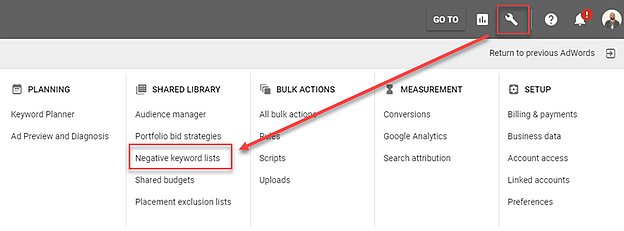
Image source: Wordstream
Finally, check which random words are being triggered that are eating up your budget. Then add these as negative keywords or replace broad match keywords in your campaigns to ensure your ads aren’t shown to the wrong people. When you are first setting up your campaign, you can find negative keywords in Google Keyword Planner. But as you collect more data over a few weeks you can use the Google Search Terms report to check which searches are triggered by your keyword match types. If you find keywords that do not correlate to your business offering, it is best to add these to your campaign specific negative keyword lists.
Step 2: Review your targeting
If your ads aren’t reaching the right people, then you will not be able to improve your conversion rate to the level you need. No conversions equal a high CPA.
Now, how do you ensure the right people (i.e your conversion prospects) see your ads? The answer is targeting.
Before you make any targeting changes, you need to look at what the data is telling you. If there is one thing I want you to take away from this blog post, it’s that the data is there and you need to embrace how to use it.
When it comes to targeting, you need to look at the demographics of your ideal user as well as their location and the devices they use when clicking on your ads. Look at both clicks and conversions.
Specifically, start by diving into individual demographics. Do you have a low CPA for particular demographics over others? Are you getting the majority of your traffic from mobile devices? Are your products limited to a particular country but your ads are showing to a global audience?
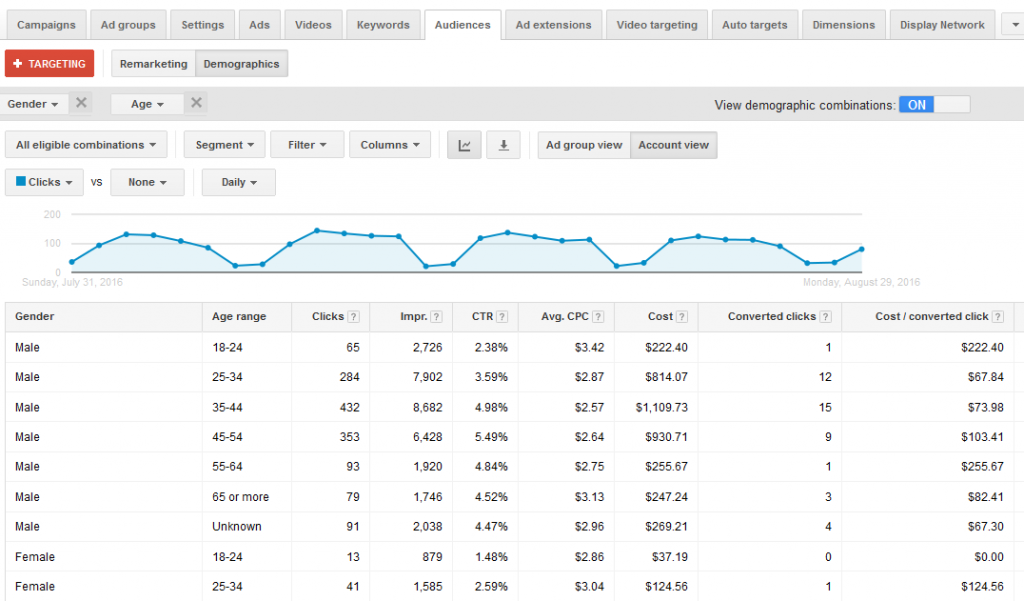
Image source: WordStream
Once you have the data you then start to make adjustments. There are two key adjustments you should make:
- Turn off advertising for particular audiences, e.g. in the case of locations where your product or service isn’t available.
- Adjust your CPA bid for each campaign you are running to reflect the value of the audience to your business.
There is no point in spending large chunks of your marketing and ads budget on audiences that don’t convert. Narrowing your audience will boost your conversion rate. The CPA bid for your campaigns should match this.
Step 3: Review your Quality Score
I’ve already mentioned Google Quality Score as a factor in reducing your CPA. A higher Quality Score for your PPC campaigns will improve your conversions and lower your CPA.
So, how do you review your quality score?
First, you need to look at your ad relevance. This is not only the relevance of the audience you are targeting but also how relevant your ad creative and keywords are. When your ads are more relevant, you will generally see higher click-throughs and higher conversion rates.
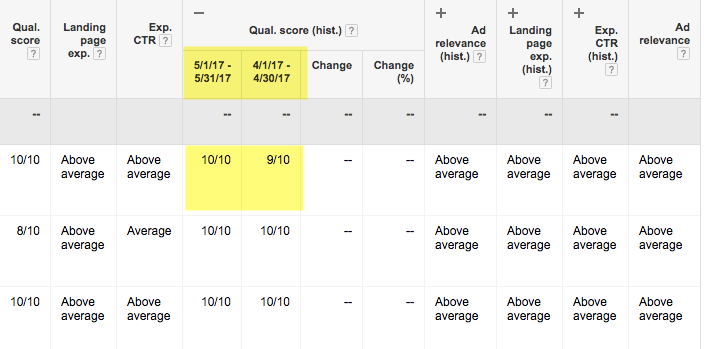
Image source: Search Engine Journal
Quality is, unsurprisingly, the second element of Quality Score. Quality refers to your ad creative and copy as well as the webpages or landing pages users will arrive on when they click through from your ad campaigns.

Image source: WordStream
You may have heard of SKAGs or Single Keyword Ad Groups. This can be a powerful Google Ads strategy. But, and this is a big but, it should only be reserved for your highest performing keywords.
If you are funnelling your marketing budget into a low-performing search term and holding high hopes that it will deliver a good CPA, you are sadly mistaken. And you are wasting your money. Your Quality Score will suffer. Go with a SKAGs approach for your best performers and group your other keywords (including negative keywords) based on searcher intent.
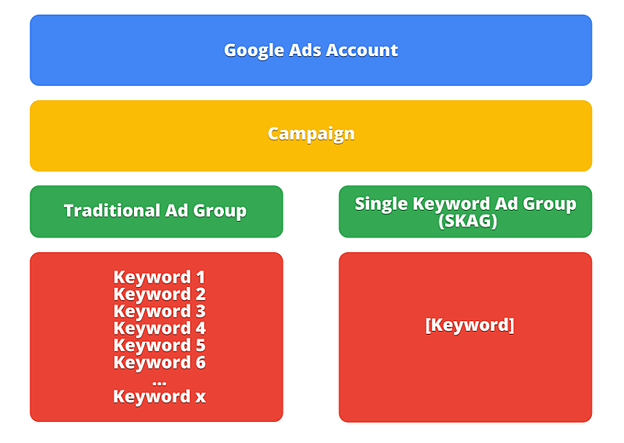
Image source: Digital Canvas
Step 4: Review your website and landing pages
As part of a sales funnel, you can’t reduce your CPA optimizing the entire journey through that funnel from your ads to the landing page and onto your website.
What does that mean? Well, you need to look at each element of your campaigns and then optimize it for conversions. Not only will this help with increasing your Quality Score, but it will also help to reduce your CPA and improve your return on investment. An optimized landing page is going to result in higher conversion rates and a better CPA.
While you are optimizing your website and landing pages you should do:
- Optimise your page load speed.
- Ensure your navigation is clear and easy to follow.
- Review the message and ensure there is a direct call to action displayed on the page.
- Check that the message is directly linked to the searcher intent as well as the demographics of the target audience.
- Ensure your landing page and website is mobile-friendly.
- Test your checkout or funnel process to ensure it offers a seamless experience..
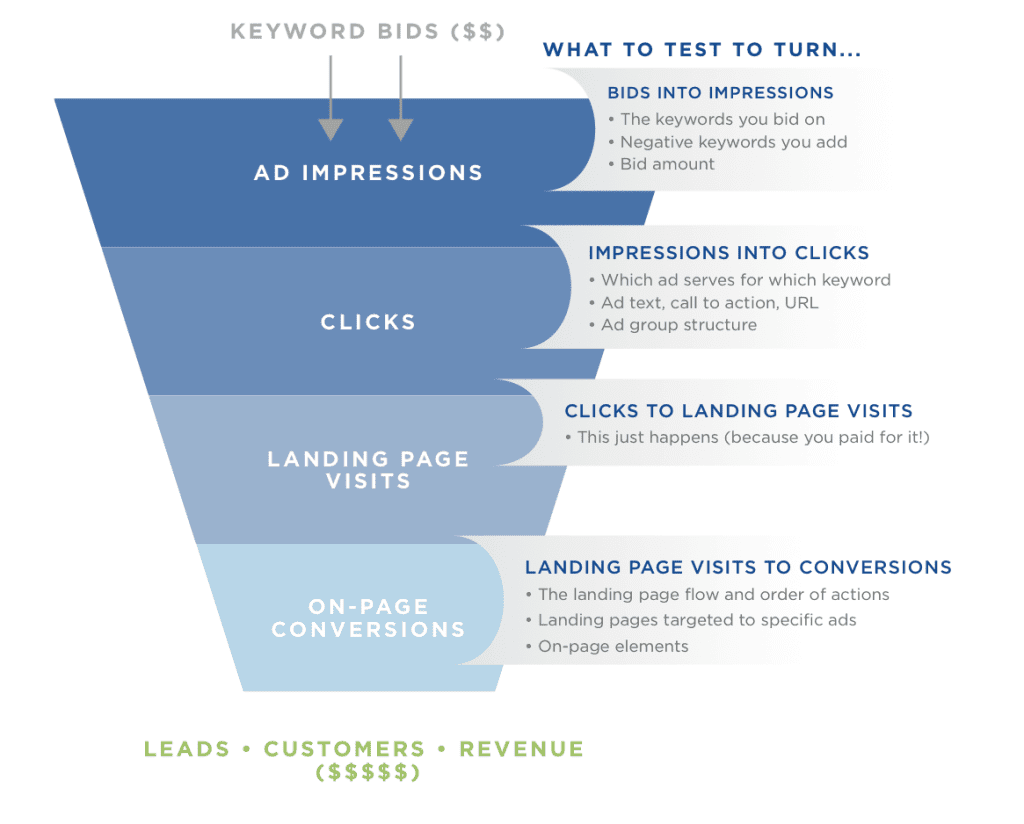
Image source: Optimizely
You will likely have more than one landing page. Some of a general nature and others highly specific. When you send the right people to the right landing pages, that’s when the magic happens. And that magic is a reduction in your CPA and a higher ROI.
Beyond your landing pages, you should also look at the performance of your overall website. If you have slow page load speeds or a clunky checkout, you won’t get the CPA reduction you are looking for because you won’t get conversions.
Step 5: Review your scheduling
The final step you can take in your mission to reduce your CPA is to review when your ads are scheduled. This helps to optimize your impressions, clicks and ultimately your CPA.
There is a lot of functionality within Google Ads that you likely aren’t using. And I’m going to take a stab that ad scheduling is likely one of them.
The default for all ads is to run continuously… unless you specify otherwise. This could mean that your advertising will run even when your target customers aren’t even online or ready to buy.
So what does this look like in practice:
- Switch off your advertising at times when your audience isn’t online (e.g. switch off on the weekends if you are trying to attract a B2B audience).
- Adjust each bid at different times to maximize results. You will need to test different bid modifiers at different times to effectively use a bid strategy to smooth out the peaks and troughs in CPA and drive conversions. E.g. 50%
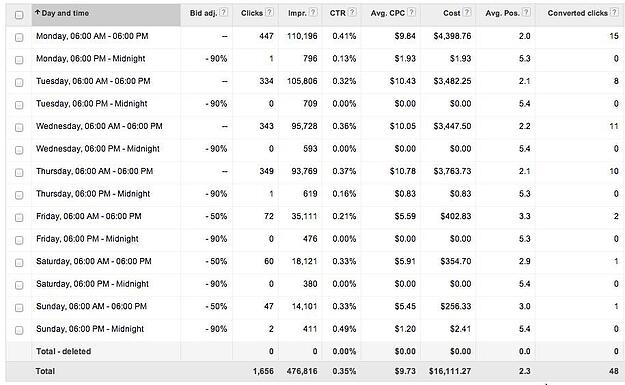
Image source: Search Engine Journal
By showing your ads only when your audience is online and likely to convert, you are going to see higher CTRs and lower CPAs.
Drive your ROI skyward
In every Google Ads campaign, there will be low hanging fruit you can easily target to get some CPA quick wins. But to really generate a higher ROI you need a smart, strategic approach.
You can put in the hard yards yourself. Or you can bring in the Gurus to manage it for you. We’re a team of marketers who use evidence and data to get results for every business we work with.
For every client, we offer a free digital audit and strategy session. You’ll get a 30-minute strategy call with one of our Growth Gurus. They’ll dive deep to understand every facet of your digital marketing strategy and then produce a 50+ page audit covering SEO, PPC, Facebook and more.
This audit will reveal the exact 6-month multichannel game plan we will implement in your business to generate serious ROI on your digital marketing efforts.
Contact us to claim your free audit and discover how we can drive your marketing budget further to deliver growth in your business.



